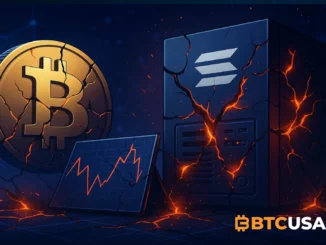Shifting Gains Attention
Upbit, a well-acknowledged South Korean cryptocurrency exchange, warned investors to show extra caution over the blockchain project called IOST that has set its concentration on decentralized applications or DApps. The warning is coming right after IOST got flagged by DAXA when it prepares for a mainnet shift into a layer-2 blockchain.
This future transition is very likely to change IOST’s tokenomics significantly, as it plans to issue 21 billion new tokens. Such decisions usually create short-term market instability and raise concerns over price volatility.
Investor Protection Measures
Upbit announced its advisory on Jan 13 and called for investors to be cautious about IOST for the time being. It showed stress that one should be aware of the risks involved in the layer-2 upgrade as the structure and network have changed significantly.
In the statement, Upbit also promised to maintain close communication with the IOST team for updates to keep users informed and safeguard investor assets during the overhaul. This proactive measure reflects the exchange’s commitment to investor protection and market stability.
DAXA’s Role in Risk Assessment
DAXA, an alliance aimed at setting unified standards among major Korean exchanges, routinely flags digital assets undergoing structural changes or unusual market activity. While the cautionary flag on IOST is not a suspension or delisting announcement, it highlights the anticipated market impacts of the token’s upcoming transition.
DAXA’s involvement ensures that investors remain informed about significant developments affecting listed assets, helping to mitigate potential risks.
Breakdown of the Layer-2 Transition
IOST has transitioned to a layer-2 blockchain following a governance vote that concluded on January 12. The upgrade involves the issuance of 21.3 billion new tokens to facilitate validator rewards, incentivize users, and power further ecosystem development.
Token distribution is as follows:
- 60%: Validator rewards
- 20%: Airdrops
- 8%: Community incentives
- 5%: Developer grants
- 4%: Governance (via Nexus DAO)
- 3%: Team compensation
IOST aims to bridge the gap between the existing layer-1 network and the new infrastructure of layer-2, which should yield better transaction efficiency, higher scalability, and affordability.
Outcome for Traders
While these changes are a big step for IOST, they also carry some risks for investors. Market reaction to the change in tokenomics and gradual supply can add some volatility.
Upbit’s caution comes to show that it is keen on keeping traders informed and protected, hence the need for this important update to IOST stakeholders.


